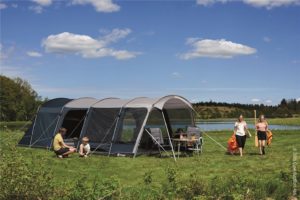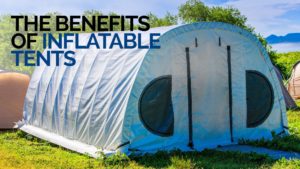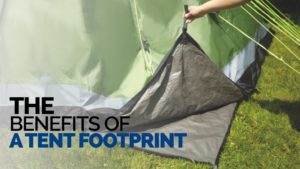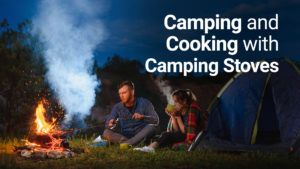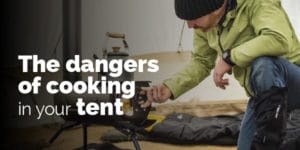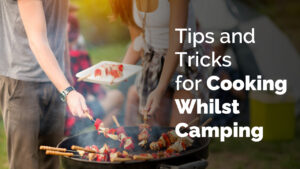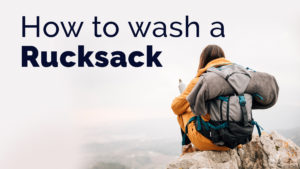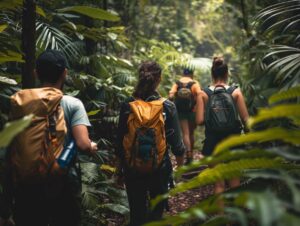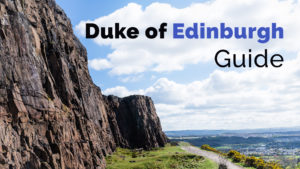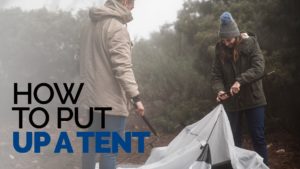
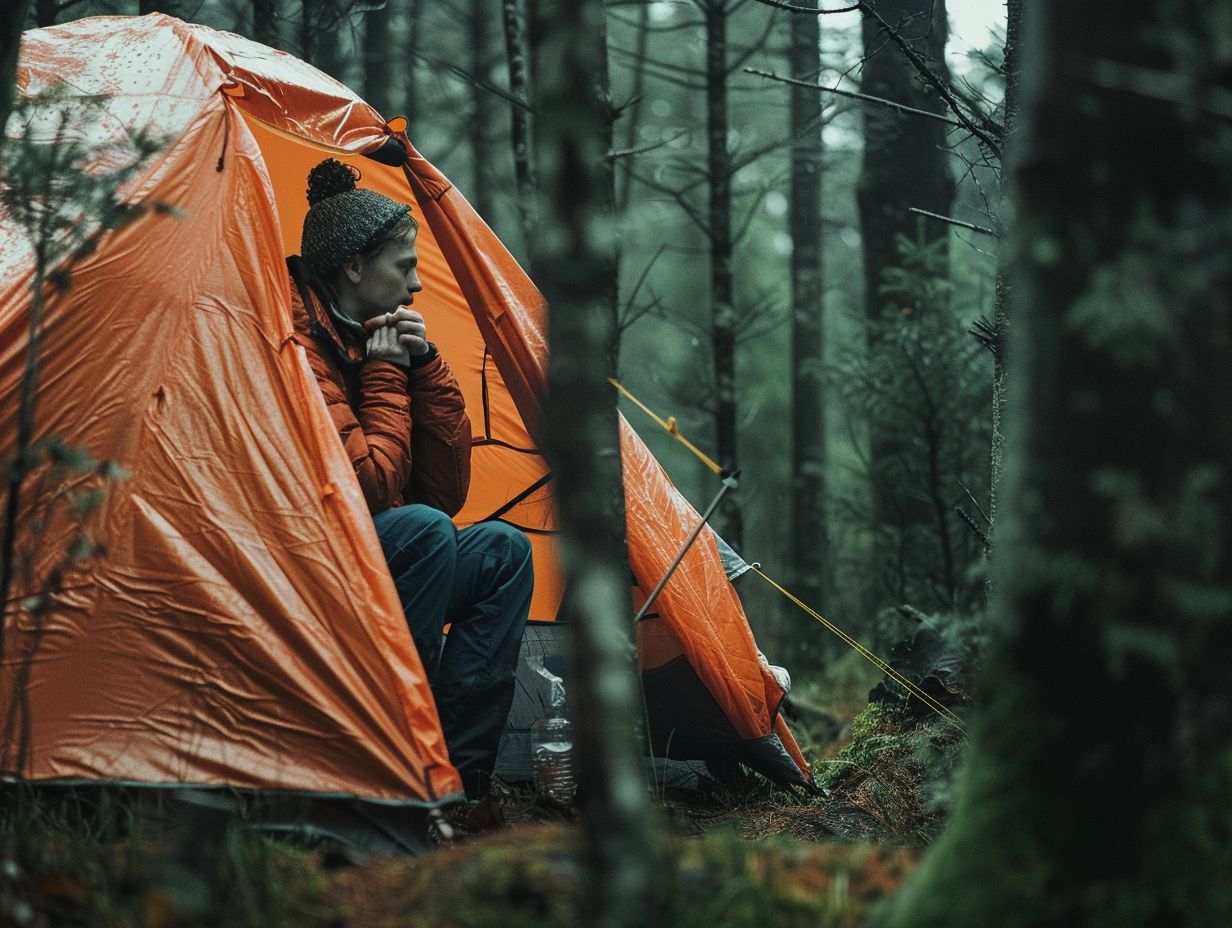
Vaibhav
- Categories: Advice
Camping is a great way to connect with nature and unwind, but it’s important to be prepared for unexpected emergencies that may arise.
From minor cuts and scrapes to severe weather and encounters with wild animals, knowing how to handle these situations can make all the difference.
In this article, we will discuss essential tips on creating an emergency plan, packing a first aid kit, and dealing with various emergency scenarios while enjoying the great outdoors.
Stay safe and informed to ensure a memorable camping experience.
Key Takeaways:

- Always have an emergency plan in place before camping, including knowing the nearest emergency services and how to contact them.
- Pack a well-stocked first aid kit and emergency supplies, including items for cuts, burns, sprains, bites, and stings.
- In case of a severe weather, lost or stranded situation, stay calm, assess the situation, and follow your emergency plan, seeking help from nearby campers or rangers if needed.
How to Deal with Emergency Situations While Camping
Camping presents an exhilarating opportunity to establish a connection with nature, yet it also entails a range of potential hazards and emergency scenarios that campers must be adequately prepared for.
1. Formulate an Emergency Plan
The development of an emergency plan is a fundamental requirement for any camping excursion, ensuring that participants are adequately equipped to address a variety of potential risks and respond appropriately.
Through the comprehensive undertaking of risk assessments, individuals can identify and anticipate potential hazards, including extreme weather conditions, encounters with wildlife, or medical emergencies. The establishment of clearly defined evacuation routes and designated meeting points serves to bolster preparedness in the event of an emergency.
Furthermore, the implementation of effective communication protocols, as exemplified by Megan Jerrard in her camping ventures, is essential for the efficient dissemination of information and the coordination of response actions among participants.
Megan underscores the significance of conducting practice drills of the emergency plan in advance to ensure that all individuals are acquainted with their respective roles and responsibilities.
2. Pack a First Aid Kit
Having a well-equipped first aid kit is essential for managing medical emergencies and delivering critical care until professional assistance can be obtained.
A comprehensive first aid kit should contain a range of plasters in various sizes for treating wounds, antiseptic wipes for cleansing cuts and grazes, adhesive tape for securing plasters, scissors for cutting gauze and clothing as needed, tweezers for extracting splinters, and disposable gloves for preventing contamination.
For more severe incidents, it is recommended to include items such as a CPR face shield, a thermal blanket, and a first aid procedures manual. These fundamental supplies can significantly enhance the ability to effectively respond to unforeseen health emergencies and ensure the well-being of individuals in your vicinity.
3. Bring Emergency Supplies
Ensuring the appropriate emergency supplies are brought along can significantly enhance one’s preparedness for unexpected situations during camping expeditions.
A crucial item to include in one’s camping kit is a portable power bank, allowing for the charging of electronic devices such as mobiles and GPS units. This ensures that individuals remain connected and well-informed even in remote locations.
Additionally, having a weather radio within reach can prove invaluable by providing timely updates on changing weather patterns. This information is crucial for individuals to anticipate and prepare for potential storms or natural disasters.
Incorporating other survival essentials like a multi-tool, first aid kit, and emergency foil blankets is recommended. These items can offer crucial support in situations involving injuries, shelter construction, or maintaining warmth in challenging outdoor environments.
4. Cuts and Scrapes
In the context of camping, it is imperative to promptly and effectively address cuts and scrapes to prevent infections and uphold safety standards.
An essential aspect of addressing minor injuries involves meticulously cleaning the wound using a mild soap and water solution to eliminate any dirt or debris that may have infiltrated the wound. Subsequently, it is crucial to apply an antibiotic ointment to mitigate infection risks and facilitate the healing process.
Utilising a sterile dressing to cover the wound serves to safeguard it from potential contaminants. It is imperative to routinely change the dressing and diligently observe the wound for indicators of infection, such as redness or pus. Possessing rudimentary medical knowledge pertaining to wound care proves invaluable in discerning when professional medical intervention becomes necessary.
5. Burns
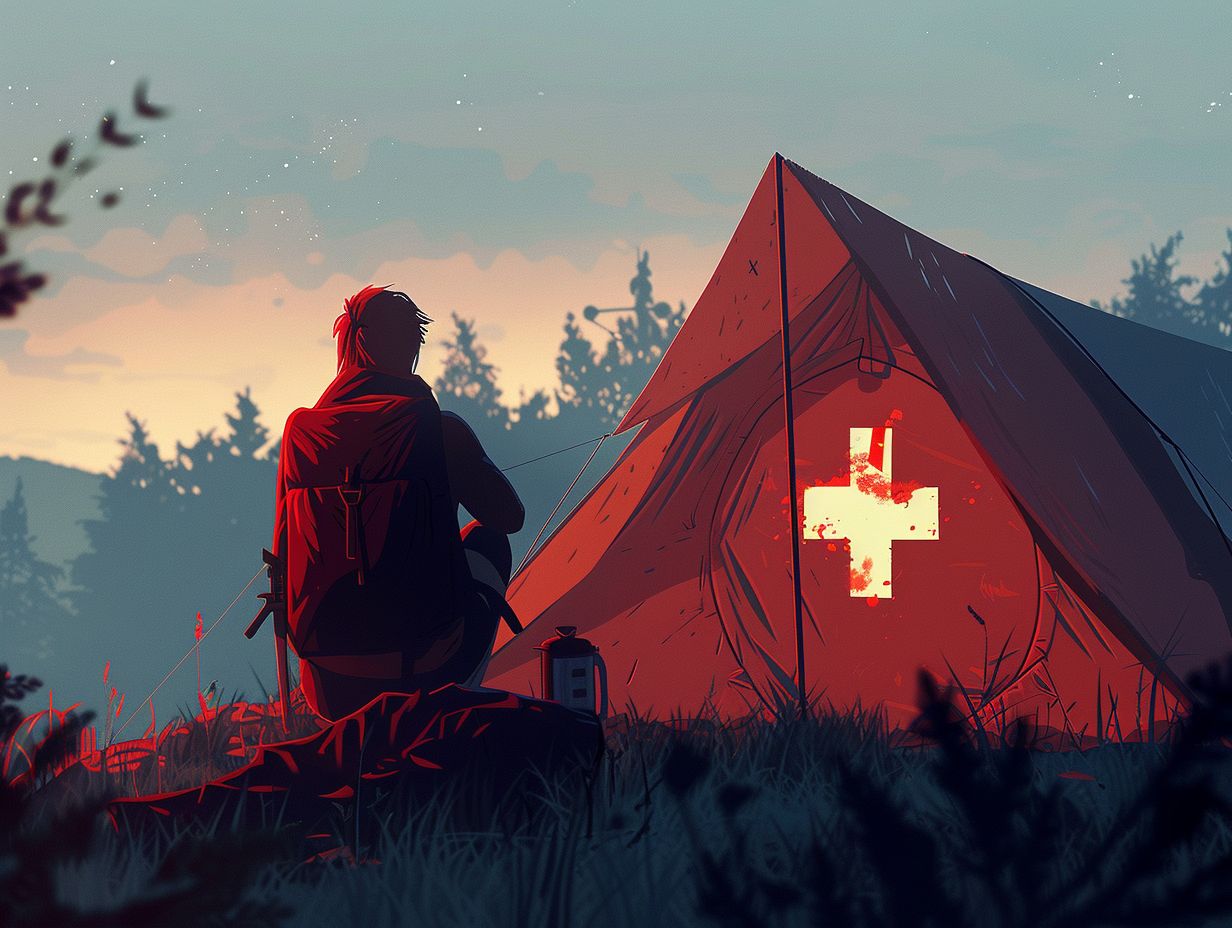
Burns are a common camping injury, and having knowledge of first aid measures can help mitigate the severity of these medical emergencies. There exist various types of burns that can occur, each requiring specific first aid treatments.
In the case of minor burns like sunburns or superficial burns from contact with a hot object, the application of cool running water can help alleviate pain and reduce swelling. It is essential to avoid using ice or butter on burns as these substances can worsen skin damage.
For more severe burns, such as those caused by flames, chemicals, or electricity, it is crucial to promptly seek medical attention. In such cases, the burn should be covered with a clean, dry cloth, and it is important not to puncture blisters. A quick response is crucial in preventing further harm and promoting fast healing.
6. Sprains and Strains
During camping, individuals may experience sprains and strains as a result of engaging in physical activities, and it is essential to provide immediate first aid to prevent exacerbating the injury.
Following a sprain or strain, one of the initial measures to be taken involves resting the affected area. It is also crucial to apply ice to the injured area to mitigate swelling and alleviate pain. In a standard first aid kit, provisions such as instant ice packs or a reusable gel pack can be utilised for this purpose.
Utilising compression bandages can provide support to the injured limb and aid in reducing swelling. Elevating the injured area above the heart can further assist in mitigating swelling. Diligently attending to and following these procedures can significantly enhance the recovery process and mitigate the risk of long-term complications.
7. Bites and Stings
Injuries resulting from bites and stings inflicted by insects or wildlife have the potential to escalate into critical medical emergencies if not addressed speedily.
Understanding the correct protocol for managing these bites and stings is crucial to mitigate the risk of complications. For instance, in the event of a snake bite, maintaining composure and promptly seeking medical intervention are paramount.
Venomous snake bites have the propensity to result in envenomation, necessitating specialised medical intervention. Similarly, allergic reactions triggered by bee stings can pose life-threatening consequences, characterised by symptoms such as respiratory distress and pronounced swelling.
In instances of such serious reactions, it is crucial to promptly contact emergency services or promptly seek consultation from a healthcare professional.
8. Clean and dress the wound
The proper cleaning and dressing of wounds are essential components of first aid that serve to prevent infections and facilitate the healing process.
- When addressing minor cuts or scrapes, the initial step involves gently cleansing the wound with mild soap and water to eliminate any debris.
- Following this, the affected area should be dried by patting it with a clean cloth, after which an antibiotic ointment should be applied to mitigate the risk of infection.
- Subsequently, the wound should be covered with a sterile dressing or gauze to shield it from additional harm.
For more profound wounds, it is imperative to promptly seek medical attention. It is crucial to bear in mind that maintaining proper hygiene while attending to wounds is critical in preventing complications and ensuring the effective healing of the injury.
9. Apply Cold Compress
Utilising a cold compress can serve as an efficacious initial medical aid for injuries such as sprains, strains, and minor burns.
For optimal application, it is advisable to envelop the cold compress in a thin towel to prevent direct contact with the skin, thereby mitigating the risk of ice burn. The cold compress ought to be administered to the affected area for approximately 15-20 minutes per session.
In the absence of a pre-prepared cold compress, it is feasible to fashion one by enclosing ice cubes in a plastic bag or employing a packet of frozen vegetables. It is imperative to remember to interpose a protective layer, such as a cloth, between the improvised compress and the skin to preclude frostbite.
10. Rest and Elevate the Injured Area
Rest and elevation play a critical role in the recovery process of sprains and strains, facilitating the reduction of pain and swelling.
In outdoor settings such as camping, where individuals engage in various physical activities, it is essential to adhere to fundamental first aid protocols. If there is a sprain or strain occurring during hiking or outdoor pursuits, it is imperative to ensure that the affected individual rests comfortably by locating a suitable place to sit or lie down.
Elevating the injured limb above the level of the heart can be beneficial in minimising swelling. Utilising makeshift cushions or clothing to provide support to the injured area and promote proper circulation is recommended. Swiftly implementing these measures can significantly enhance the healing trajectory, enabling the individual to swiftly recover and resume their camping activities.
11. Severe Weather
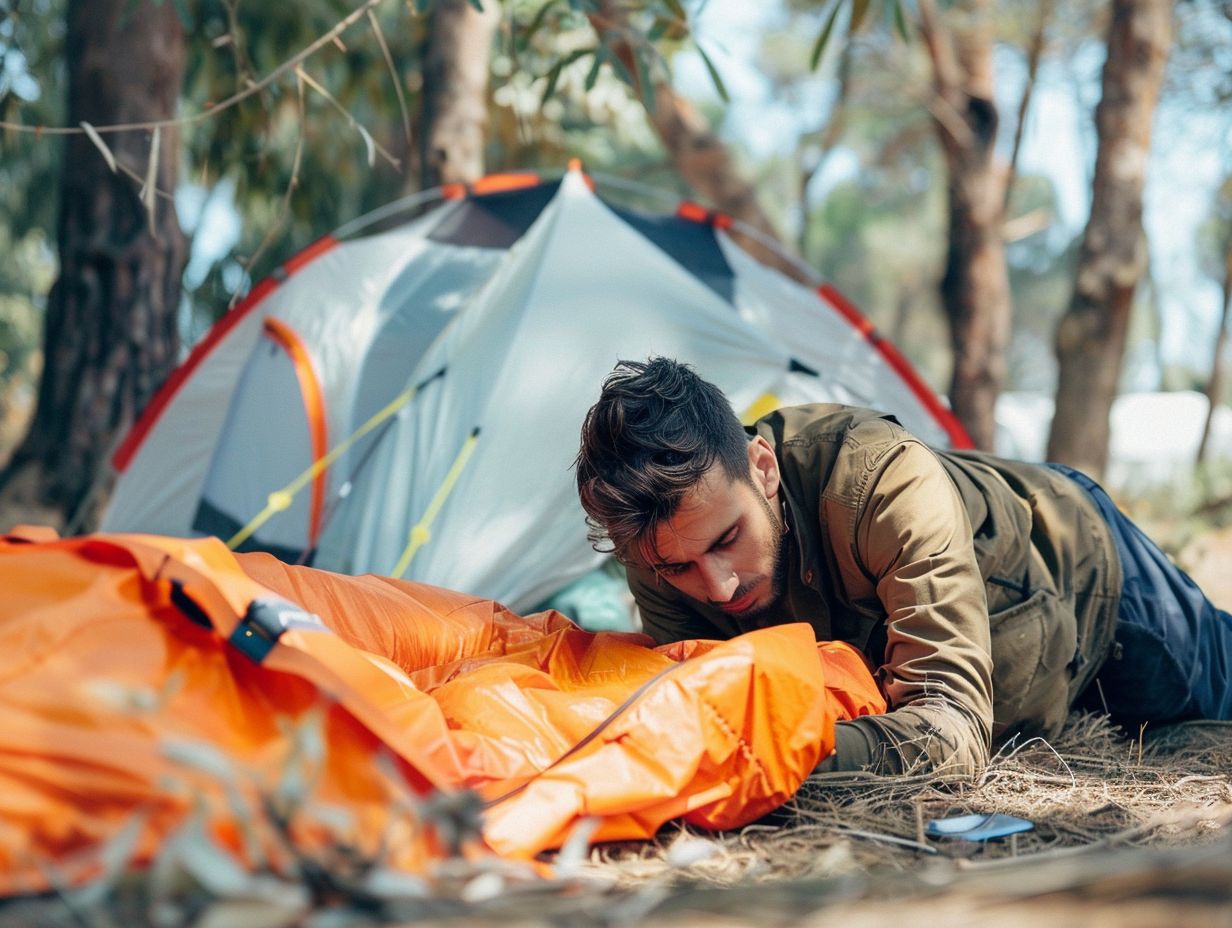
Inclement weather conditions can present considerable hazards while engaging in camping activities, emphasising the importance of readiness and possessing appropriate equipment to safeguard personal safety.
Thunderstorms have the propensity to form rapidly, ushering in forceful winds, intense precipitation, and lightning occurrences. Additionally, the presence of extreme temperatures, be it scorching heat or frigid coldness, can yield perilous situations for individuals on camping excursions.
To mitigate these potential dangers, it is imperative to be equipped with essential gear such as weather radios for timely alert reception and emergency blankets to offer warmth and protection.
The possession of these fundamental items can significantly enhance one’s ability to remain secure and well-prepared when confronted with unpredictable weather conditions while partaking in outdoor pursuits.
12. Lost or Stranded
In situations where one becomes lost or stranded in the wilderness, it is imperative to act swiftly and employ survival skills to ensure safety and facilitate effective communication for rescue efforts.
When confronted with such circumstances, the primary focus should be on maintaining a sense of calm and composure. Succumbing to panic can hinder rational decision-making and impede the ability to assess the surroundings or adhere to established protocols.
Sustaining communication channels, such as signalling for assistance using tools like a whistle or mirror, can significantly enhance the likelihood of being located by search teams. Applying fundamental survival techniques like locating shelter, procuring water, and signalling for help through the use of fire or markers can greatly contribute to a successful rescue operation.
It is essential to bear in mind that exercising sound judgement and remaining steadfast in one’s concentration are paramount to surviving in wilderness settings.
13. Wild Animal Encounters
Encounters with wild animals present inherent risks, emphasising the importance of adhering to established wildlife safety protocols, particularly in regions abundant with wildlife, such as bear country.
If there is an encounter with wild animals, maintaining composure and refraining from sudden movements that might agitate them is paramount.
It is advisable to maintain a significant distance, with a minimum of 100 yards recommended for larger animals like bears, and to refrain from approaching or attempting to feed them. Emitting noise to make animals aware of your presence is advised, especially in areas with dense foliage that may impede visibility.
Properly securing food supplies and appropriately disposing of waste in designated receptacles are essential practices to deter wildlife from being drawn to your camping area. By adopting a proactive approach and demonstrating respect for their natural habitats, individuals can contribute to fostering a harmonious coexistence with wild animals.
14. Stay Calm and Assess the Situation
Remaining composed and evaluating the situation calmly is the initial step in any efficient emergency response, ensuring that well-informed decisions are made.
By taking a moment to compose oneself and regulate breathing, individuals can significantly enhance their ability to maintain composure during high-stress scenarios. Grounding oneself and focusing on the present facilitate a more accurate assessment of the emergency’s severity, enabling the identification of the most suitable course of action.
Safety must always be the top priority for all parties involved before initiating any response measures. Implementing clear communication strategies and effectively delegating tasks can streamline the response procedures, leading to the crisis being managed in a logical and systematic manner.
15. Follow Your Emergency Plan
Adherence to established emergency plans and procedures is essential for ensuring a well-coordinated and effective response to any crisis that may arise during camping activities. Having clear communication protocols in place enables all members of the group to swiftly and efficiently convey essential information in the event of an emergency.
This becomes particularly critical in scenarios involving severe weather conditions or medical emergencies. Evacuation procedures hold equal significance, particularly in situations like the imminent threat of a wildfire or when an injured camper requires immediate medical attention.
Prior practice of these protocols serves to instil a sense of calm and focus among all individuals, facilitating their ability to address unforeseen challenges effectively in outdoor environments.
16. Seek Help from Nearby Campers or Park Rangers
In times of emergency, seeking assistance from nearby campers or park rangers can offer prompt support and aid. Effective communication plays a critical role during emergencies, ensuring timely assistance can be obtained.
It is essential to maintain composure and articulate necessary information clearly to facilitate effective communication. Apart from verbal exchanges, signalling for help through visual cues, such as waving brightly coloured clothing or utilising a mirror to reflect sunlight, can aid in attracting attention.
Park rangers are integral to emergency responses, given their specialised training in handling diverse situations and coordinating rescue operations proficiently. Leveraging their familiarity with the area and available resources, park rangers can offer invaluable assistance during distressing situations.
17. Use Emergency Supplies and First Aid Kit
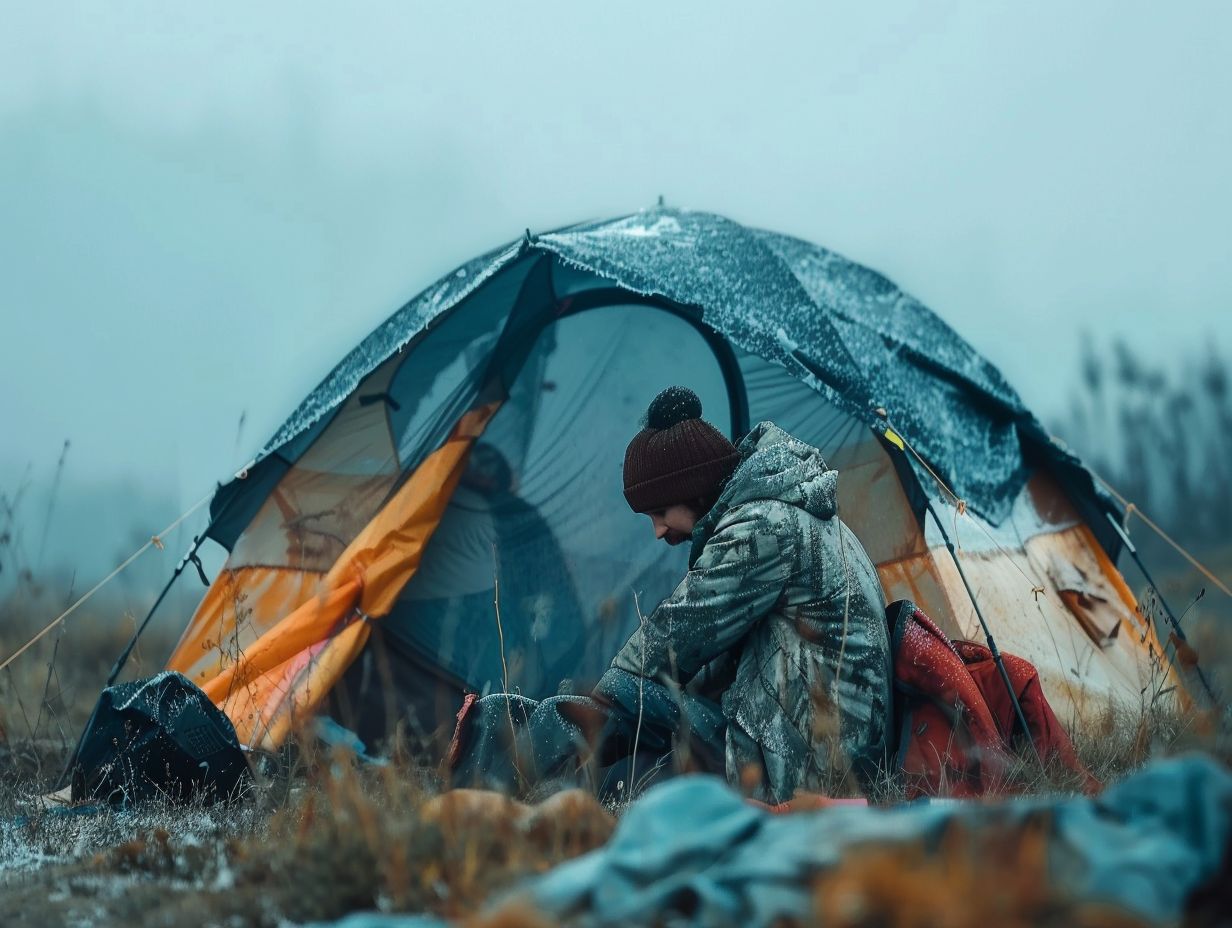
Utilising emergency supplies and a first aid kit promptly can help alleviate the seriousness of injuries and medical conditions during a crisis. It is imperative to have essential items such as plasters, antiseptic wipes, and adhesive tape readily accessible to effectively treat wounds and prevent infections.
In situations such as hiking or camping trips, including a whistle and signal mirror in your kit can assist in signalling for help if lost. Additionally, having emergency blankets and a torch on hand can offer warmth and improved visibility in unexpected circumstances.
By routinely inspecting and restocking your first aid kit, you are ensuring preparedness for any unforeseen emergencies, enabling you to respond promptly and efficiently.
18. Evacuate if Necessary
The process of evacuating a campsite may become necessary in the presence of severe hazards, and the presence of a formal campsite evacuation plan ensures a safe and orderly departure.
When determining the appropriate time for evacuation, critical factors such as impending severe weather conditions, encroaching wildfires, or any other immediate dangers become pivotal considerations. These circumstances necessitate prompt and decisive action to ensure the safety of all individuals on-site.
A secure evacuation procedure typically involves promptly notifying all campers, collecting essential belongings, following specified evacuation routes, and convening at a designated safe assembly point.
Instances of successful evacuations, as observed during recent forest fires in the region, highlight the paramount importance of meticulous advance planning and effective coordination, factors that can significantly influence outcomes in exigent situations.
Frequently Asked Questions
1. What should I do if someone gets injured while camping?
If someone gets injured while camping, the first step is to remain calm and assess the situation. If it is a minor injury, you can treat it with a first aid kit. However, if it is a serious injury, seek medical attention immediately by calling 999 or the nearest emergency services.
2. How can I prepare for emergency situations before camping?
Before going camping, it is important to research the area and familiarise yourself with potential emergency situations such as natural disasters, wildlife encounters, and medical emergencies. Pack a first aid kit, bring a map of the area, and have a communication plan in case of emergencies.
3. What should I do in case of a wildlife encounter while camping?
If you encounter a wild animal while camping, remain calm and slowly back away. Do not run, make sudden movements, or make eye contact with the animal. If the animal approaches or attacks, use bear spray or make loud noises to scare it away.
4. How can I stay safe in case of a natural disaster while camping?
If you are camping in an area prone to natural disasters such as hurricanes or wildfires, it is important to have an emergency plan in place. Stay informed about the weather and follow evacuation orders if necessary. Seek shelter in a sturdy building or designated safety area.
5. What should I do if I get lost while camping?
If you get lost while camping, stay calm and try to retrace your steps. If you have a map and compass, use them to orient yourself and find your way back to your campsite. If you cannot find your way back, stay put and wait for help. Make noise or use a signalling device to attract attention.
6. How can I prevent emergency situations while camping?
The best way to deal with emergency situations while camping is to prevent them from happening in the first place. This includes informing yourself about the potential risks of the area, packing essential safety items such as a first aid kit and communication devices, and following safety guidelines for activities such as campfires and food storage. It is also important to always have a buddy system and let someone know about your camping plans.
Share:
By submitting your email address, you are agreeing to receive marketing emails from theexpertcamper.co.uk.
We’ll never share your email address and you can unsubscribe at any time. Privacy policy
Related Posts

A Seasonal Guide To Hiking In The Peak District
Are you ready to lace up your hiking boots and explore the stunning landscapes of the Peak District? This seasonal guide will take you through

Hiking Challenges Preparing For Your First Ultrahike
Are you ready to take your hiking adventures to the next level? Ultra-hiking offers a unique combination of physical and mental challenges, breathtaking scenery, and
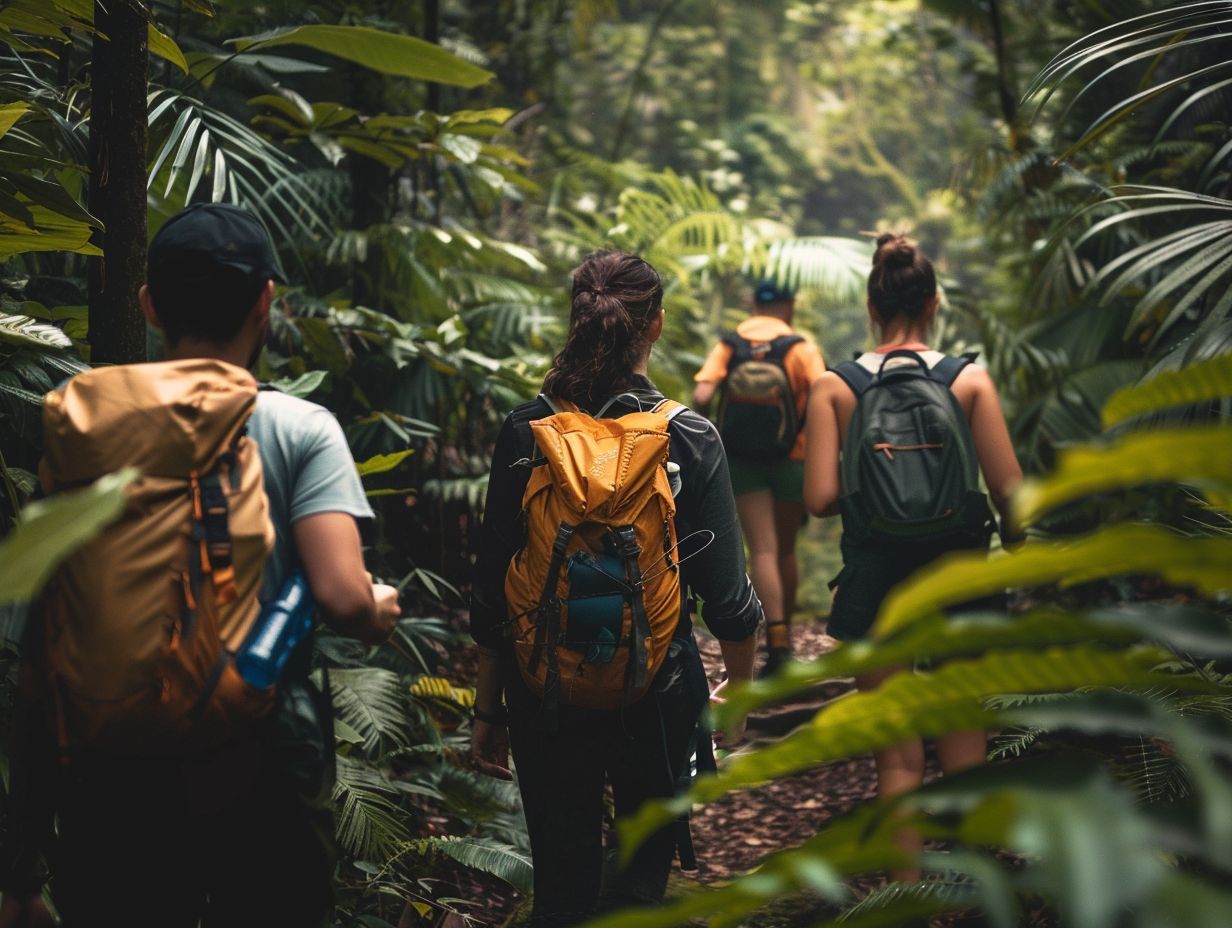
Ecofriendly Hiking Tips For Sustainable Adventures
Are you an outdoor enthusiast looking to minimise your impact on the environment while enjoying the great outdoors? Eco-friendly hiking is the perfect solution! We
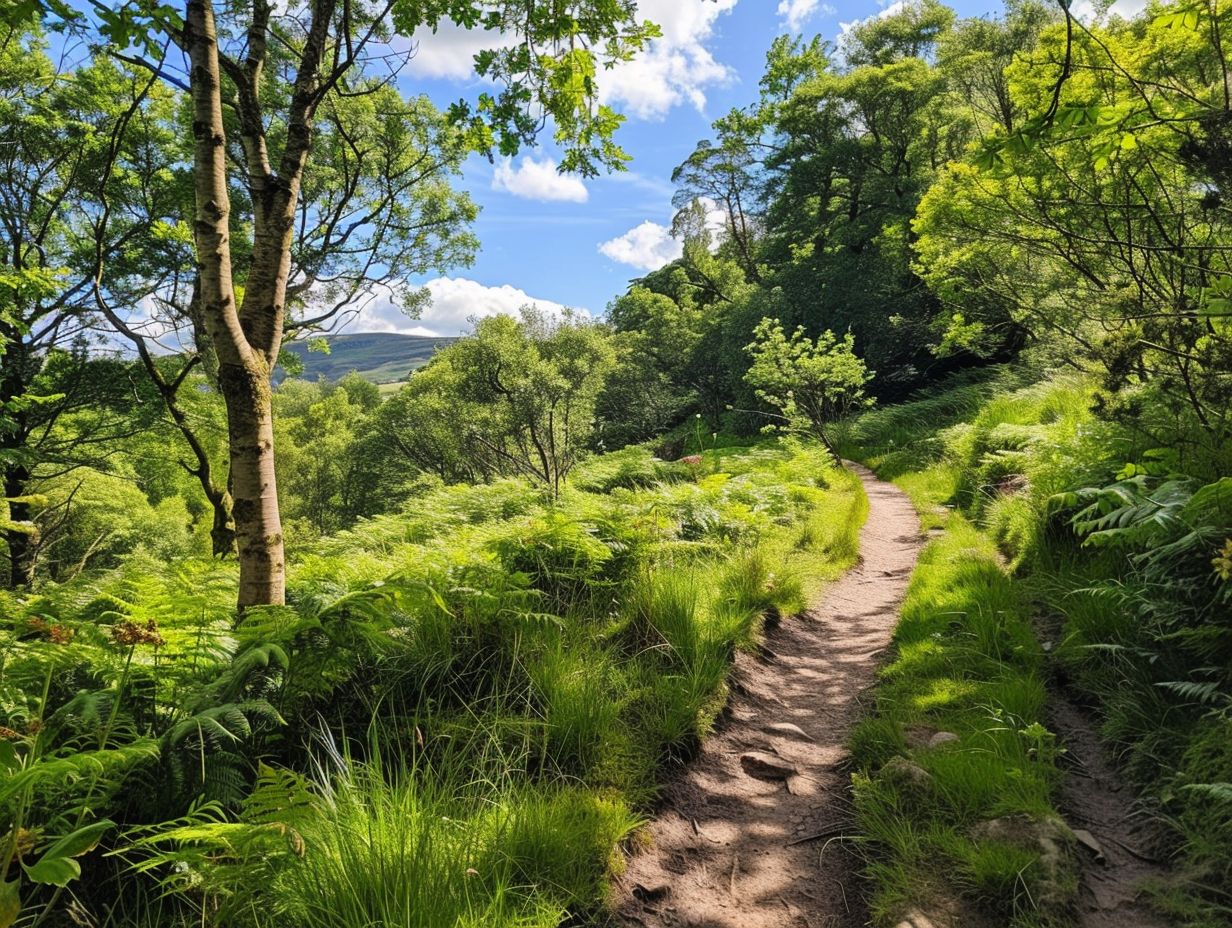
The Best Hiking Trails For Experiencing UK Wildlife
When exploring the picturesque hiking trails of the UK, you can expect to encounter a diverse array of wildlife. From majestic birds soaring overhead to

Wildflower Walks The Best Trails For Nature Lovers
Are you a nature lover looking to embark on a wildflower walk? Explore the best trails for wildflower walks, including [Trail Name 1], [Trail Name


